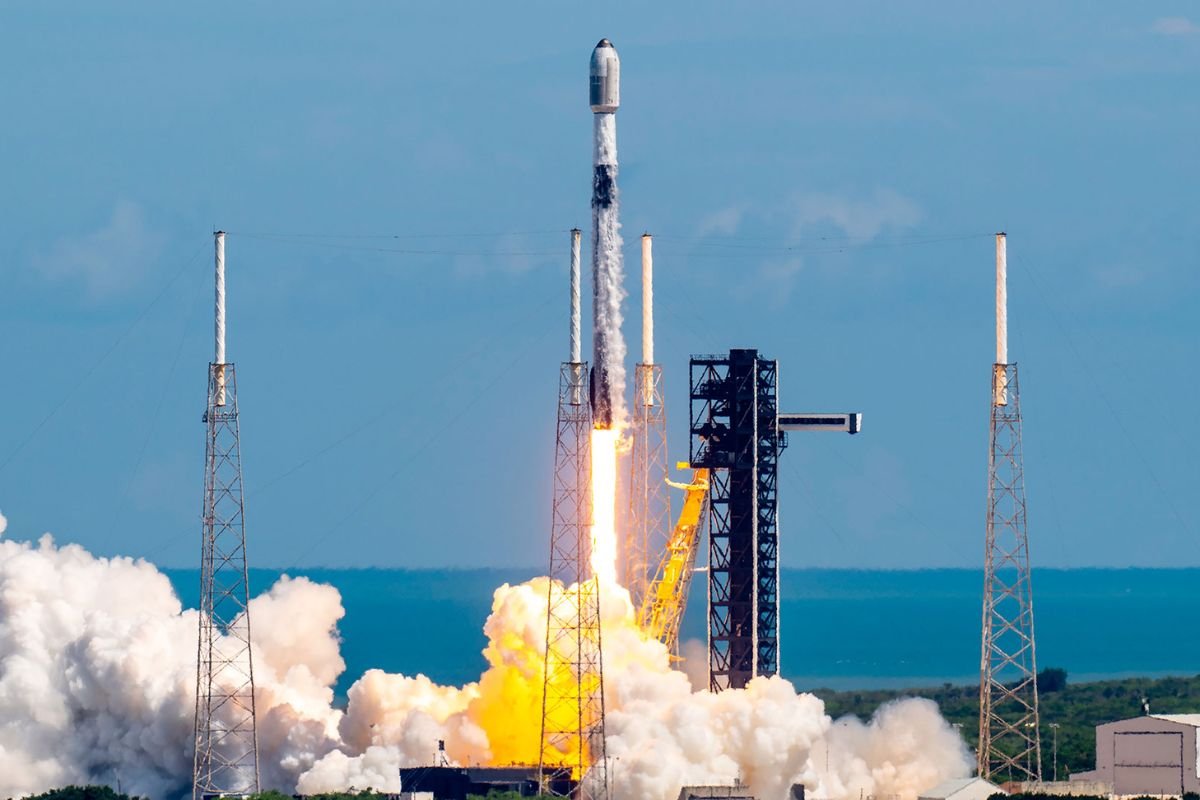Late Tuesday night, SpaceX launched 28 Starlink V2 Mini satellites aboard a Falcon 9 rocket from Cape Canaveral Space Force Station in Florida. The mission, dubbed Starlink Group 10-29, took off precisely at 11:37 p.m. EDT on July 29, 2025 (03:37 UTC, July 30). The skies were mostly clear, with the 45th Weather Squadron projecting a 90% chance of favorable conditions, allowing for an uninterrupted countdown and liftoff.
The booster supporting the mission, B1069, marked its 26th flight, having previously flown critical missions such as CRS-24, SES-18/19, and over 20 Starlink batches. Just over eight minutes post-launch, it executed a precise landing on SpaceX’s autonomous droneship “Just Read the Instructions”, stationed in the Atlantic Ocean adding to the company’s record-breaking tally of 482 booster landings to date.
Starlink Network Expansion Accelerates
The SpaceX launched 28 Starlink V2 Mini satellites generation, a smaller and more efficient model equipped with expanded capabilities to support SpaceX’s growing broadband internet constellation. With this launch, the number of active Starlink satellites in low-Earth orbit climbs past 8,000, according to orbital data analyst Jonathan McDowell, out of more than 9,300 units launched since the project’s inception in 2018.
This mission was part of a rapid-fire launch sequence, with a nearly identical Starlink deployment of 24 satellites from Vandenberg Space Force Base in California occurring less than 24 hours earlier on July 27. That west coast launch, using booster B1075, continued the coast-to-coast rhythm SpaceX has adopted in recent months. The Florida launch became SpaceX’s 96th orbital mission of 2025, with another crewed mission Crew-11 to the International Space Station slated in the days ahead.
Booster Reuse Strategy Hits New Heights
The repeated use of booster B1069 is a testament to SpaceX’s unmatched pace in booster refurbishment and reuse. Completing its 26th launch and recovery, the booster exemplifies the company’s cost-effective model of rapid turnaround launches. Some Falcon 9 boosters now regularly achieve turnaround times under 40 days redefining expectations in orbital logistics.
The droneship “Just Read the Instructions” has also become a reliable asset in this ecosystem, having hosted well over 100 Falcon 9 landings. The seamless integration of reusability, satellite deployment, and SpaceX launched 28 Starlink V2 Mini satellites frequency underscores SpaceX’s broader strategy: to maintain its leadership in commercial spaceflight while scaling global internet coverage via Starlink.
In just over a day, SpaceX executed two successful Starlink missions from opposite U.S. coasts, reinforcing its dominance in launch cadence, booster reusability, and satellite constellation expansion. With over 8,000 satellites now active, and a steady stream of launches ahead, SpaceX’s Starlink project continues to reshape the global communications landscape at an unprecedented speed.
Sources: https://www.vcstar.com/story/news/2025/07/28/california-rocket-launch-spacex/85372656007










